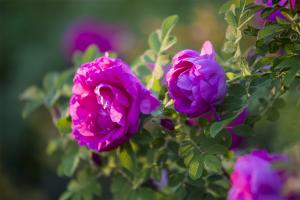How to Wrap Potted Plants in Burlap
Burlap is a versatile material that is used for a variety of purposes, including wrapping potted plants during the cold winter months. Burlap provides an extra layer of insulation, protecting delicate plants from frost and extreme temperatures. In this article, we will provide you with a step-by-step guide on how to wrap potted plants in burlap so that you can keep your plants healthy and happy throughout the winter season.
Step 1: Select the Right Burlap
The first step in wrapping your potted plants in burlap is to select the right material. Burlap comes in different weights and grades, so it is important to choose the right one for your needs. Look for burlap that is breathable and allows air to circulate around the plant. Avoid using plastic or other non-breathable materials, as they can trap moisture and cause the plant to rot or develop mold.
Step 2: Measure the Plant
The next step is to measure the size of the plant and the pot. Cut a piece of burlap that is large enough to cover the plant and the pot. You will need enough burlap to wrap around the plant several times, so it is better to have more material than you need.
Step 3: Wrap the Plant
To wrap the plant, place the burlap over the top of the pot and gently fold it down over the sides. Make sure that the burlap is snug around the plant, but not too tight. You want to allow some room for air circulation, but still keep the plant warm and protected from the elements.
Step 4: Secure the Burlap
Once the burlap is in place, you will need to secure it with twine or string. Wrap the twine around the base of the pot several times and tie it in a knot. Then, wrap the twine around the plant a few times, making sure that it is tight enough to hold the burlap in place but not too tight that it damages the plant.
Step 5: Add Extra Layers
If you have sensitive or delicate plants, you may want to add extra layers of burlap for added protection. Simply repeat steps 3 and 4, adding additional layers of burlap as needed. Remember to make sure that there is still enough air circulation around the plant to prevent moisture buildup and rot.
Step 6: Water and Monitor
After you have wrapped your potted plants in burlap, water them thoroughly and monitor them regularly throughout the winter season. Check for signs of moisture buildup, mold or rot and remove any damaged or dead leaves as needed. With the right care and protection, your plants will remain healthy and happy even in the coldest winter months.
Wrapping potted plants in burlap is an easy and effective way to protect them from the harsh winter weather. By following these simple steps, you can ensure that your plants remain healthy and happy throughout the season, ensuring that you can enjoy their beauty year after year.

 how many times do yo...
how many times do yo... how many planted tre...
how many planted tre... how many pine trees ...
how many pine trees ... how many pecan trees...
how many pecan trees... how many plants comp...
how many plants comp... how many plants can ...
how many plants can ... how many plants and ...
how many plants and ... how many pepper plan...
how many pepper plan...





























